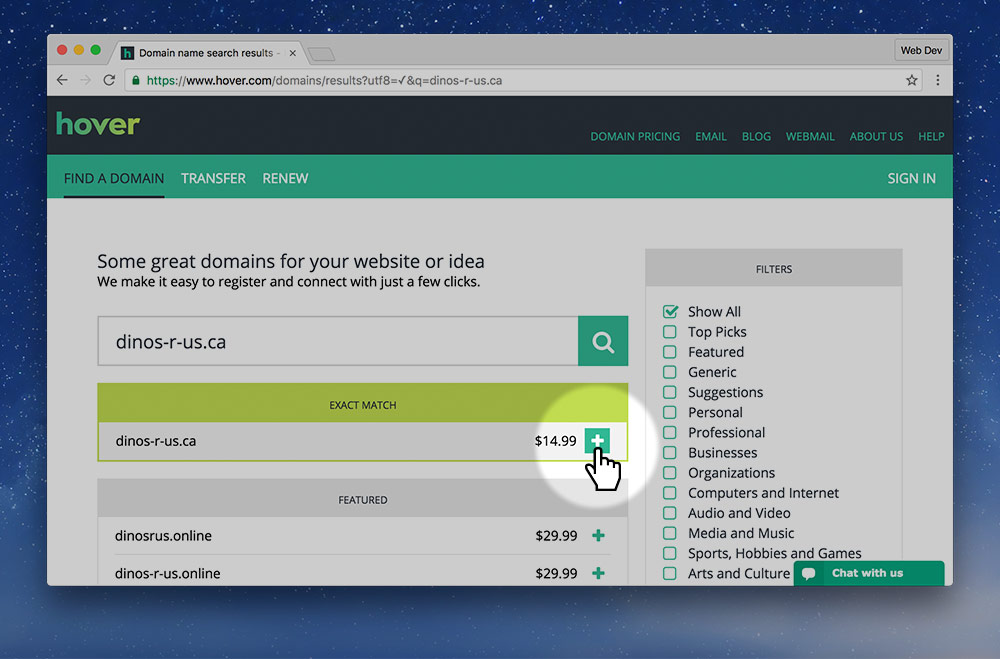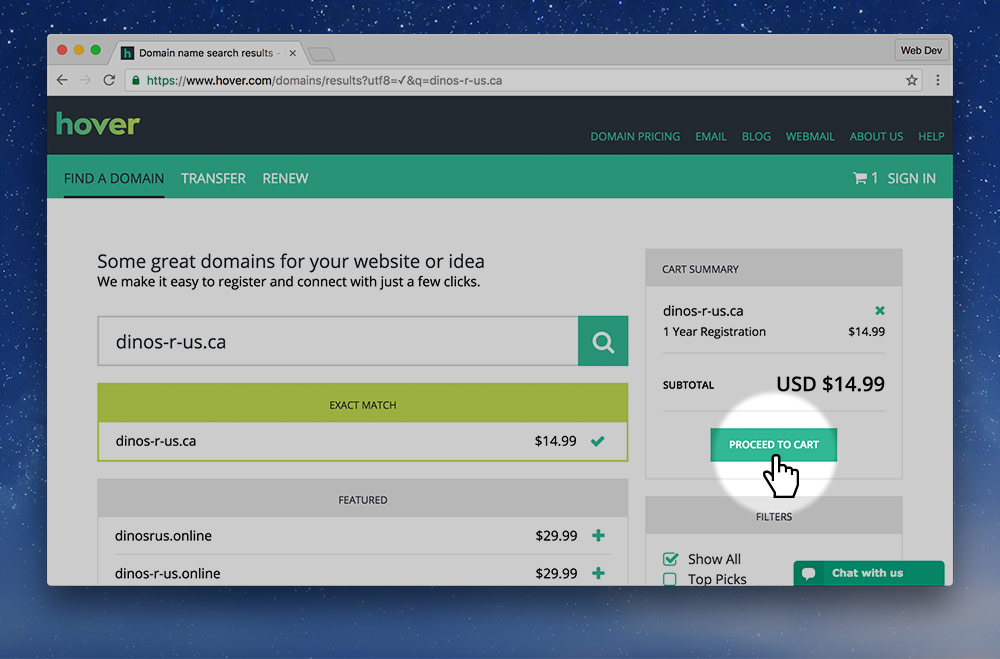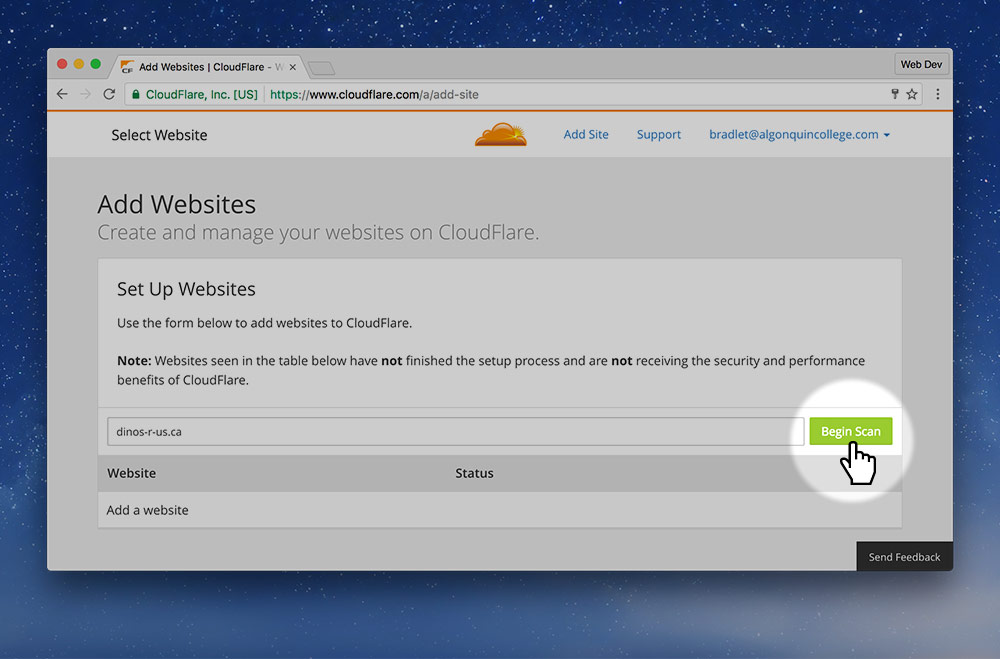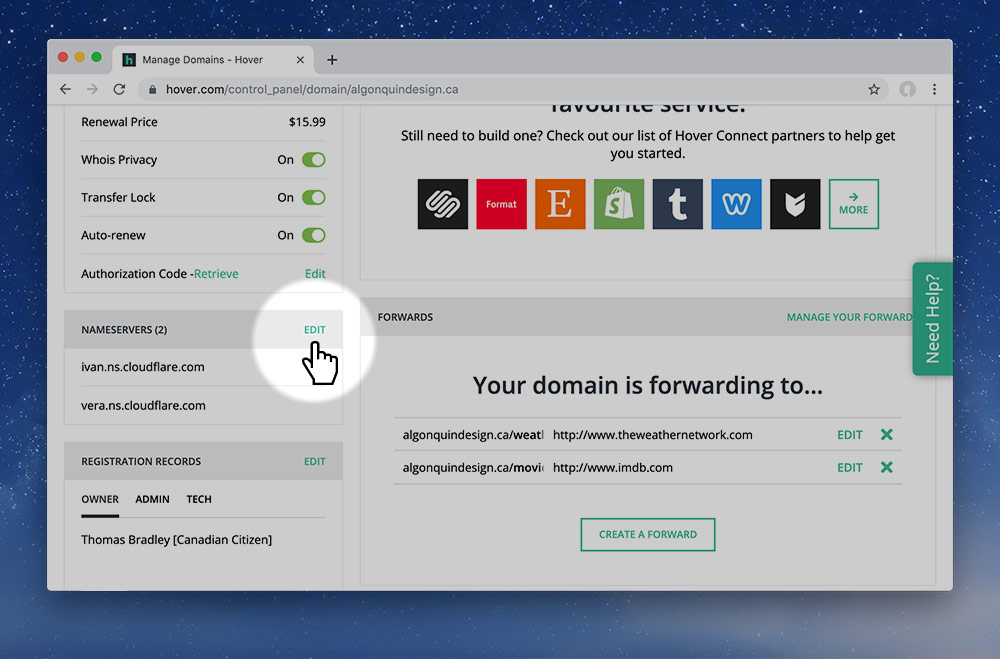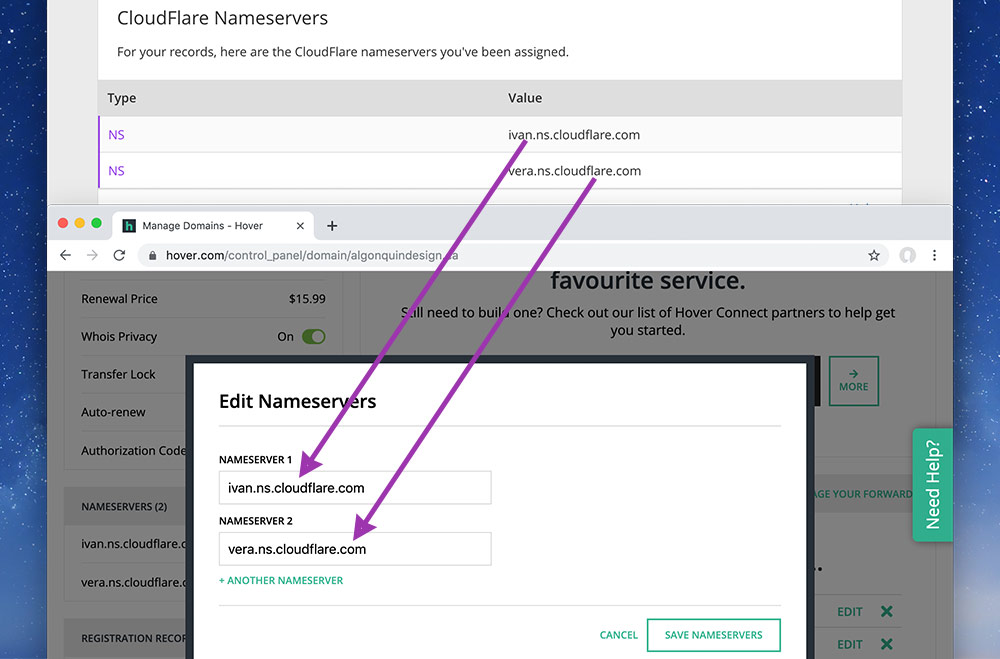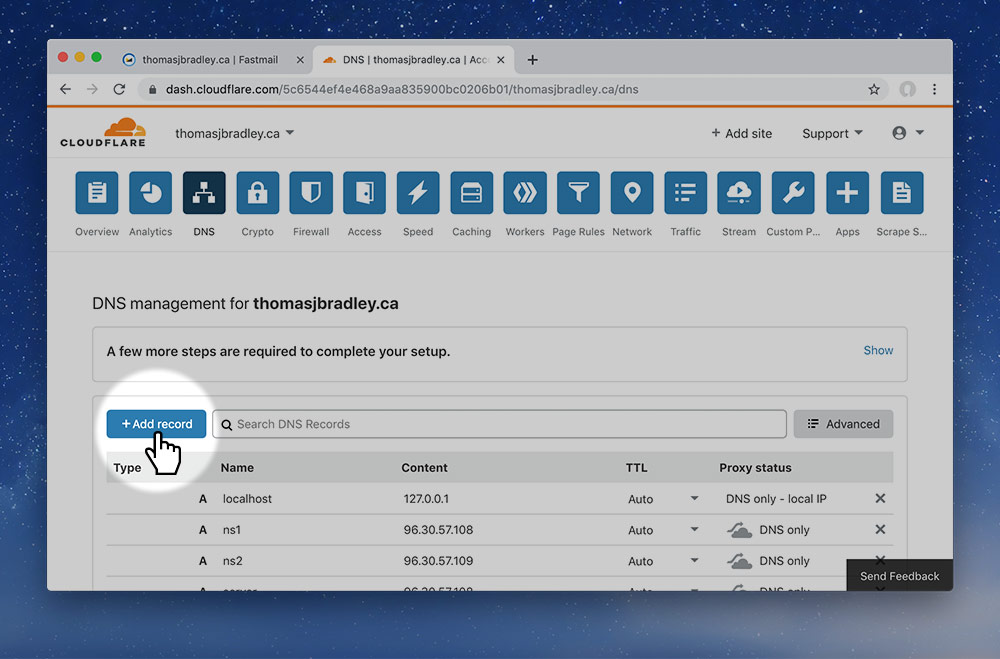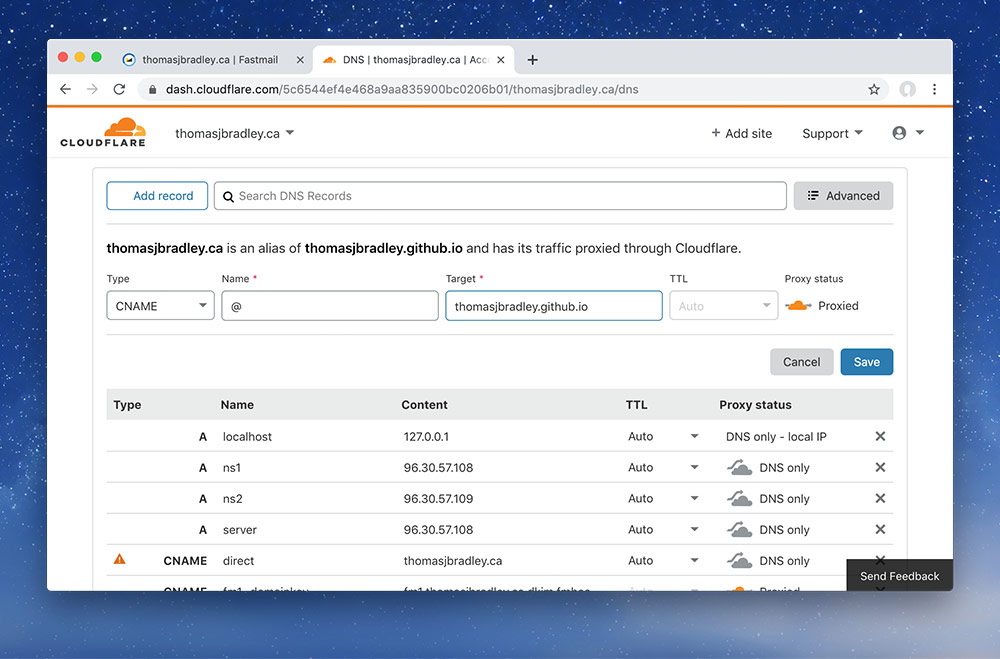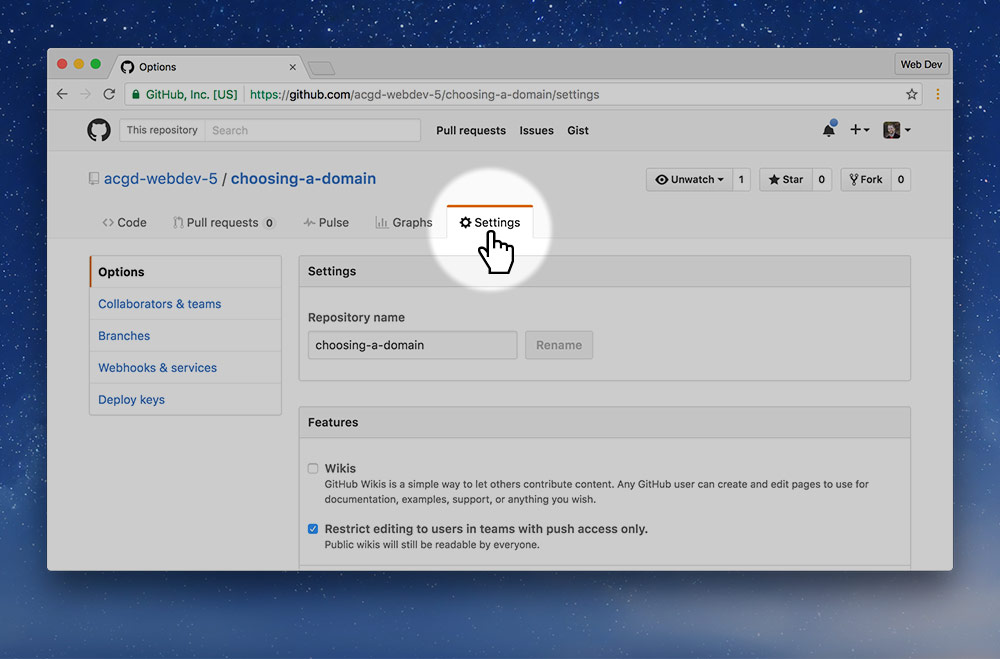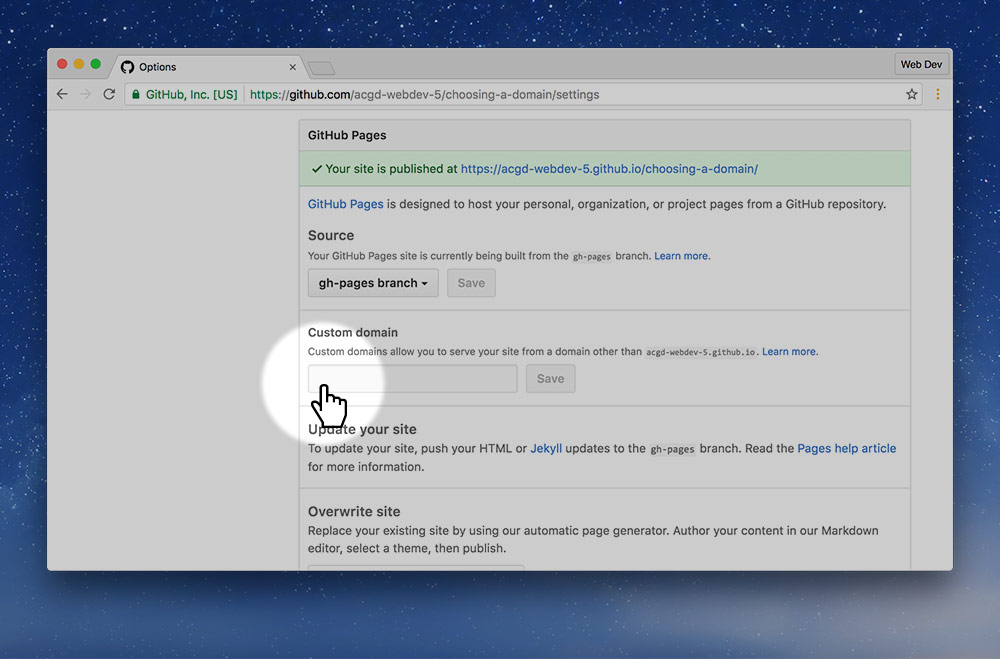We’re going to be purchasing domains from Hover†, a small Canadian domain registrar with amazing customer service.
Go to Hover & make an account

Go to the website and search for the domain you want.
If the domain you’re looking for doesn’t exist you can search again or find a different TLD.
.ca? — Yes.
Ideally you want to choose .ca because it will give you better search results juice for Canadian searchers.
If you want, you could also get the .com and forward it to the .ca so they act as the same website.
† The Hover links are referral links, from me, that will get you $2 off your first domain.

